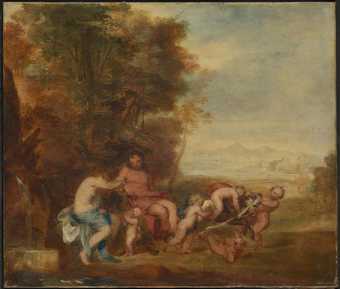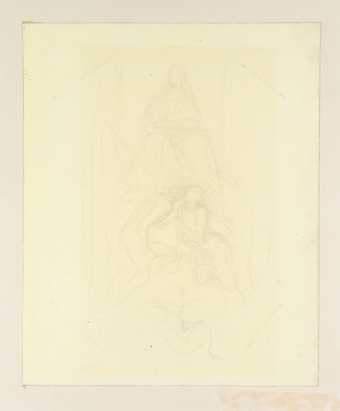
George Frederic Watts
The Golden Age (c.1840)
Tate
Watts’s early painting was influenced by Lawrence and Etty, but his real ambition was to paint large allegories.
After his visit to Florence, his work came under various Italian influences.
Some of these early compositions, like the unfinished Guelphs and Ghibelines, are crude in colour, but it must be remembered that they were intended to be seen in large buildings at a great distance.
Later, the artist came under the influence of Titian and Tintoretto, though disapproving of Tintoretto's force and strong chiaroscuro. Some early portraits were painted on white ground with copal varnish as a vehicle, but these have a tendency to blister.
As time passed, he built up his paintings from coloured grounds, sometimes using a bright yellow which gave quality to his greys and blues, but it was apt to work through and spoilt his flesh colour. The beautiful portrait of' Lady Powerscourt with its broad masses of blue dress and sky setting off the warm flesh and chestnut scarf, is painted over a yellow ground.
In his later work Watts used coarse canvas like sacking, and his grounds were very absorbent; at the other extreme, the fancy pictures of this period like Good Luck to Your Fishing, lack lightness of touch and one turns for enjoyment to his portraits and smaller compositions where he was confronted with actualities.

